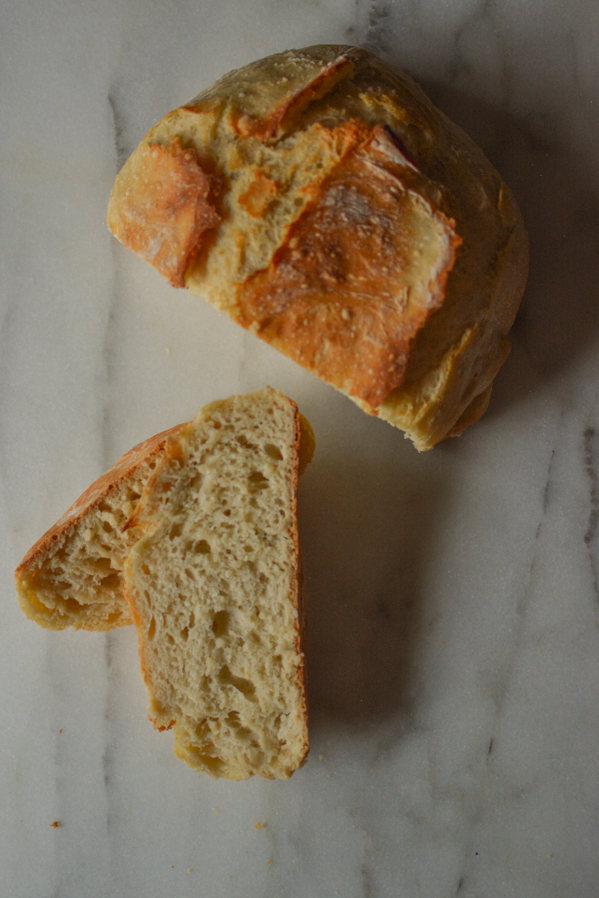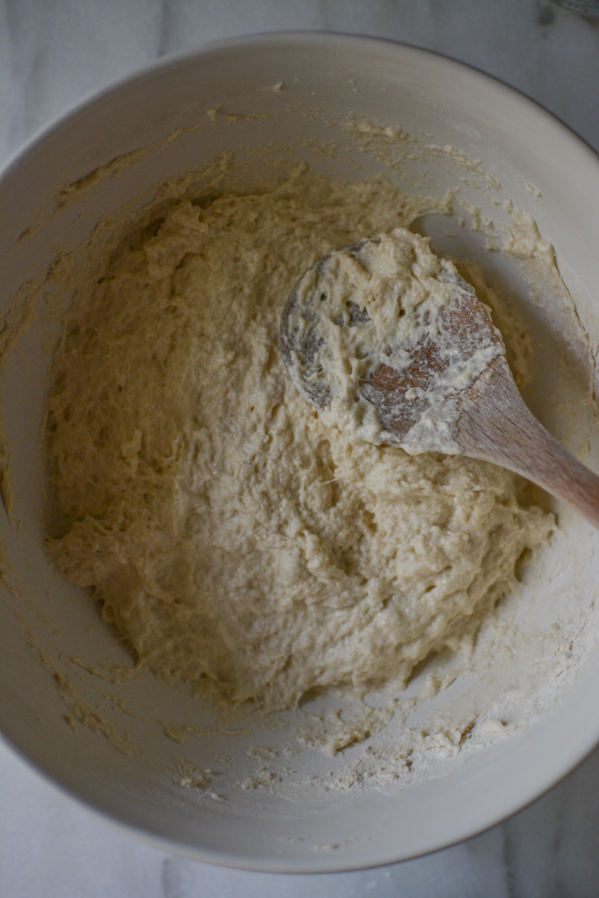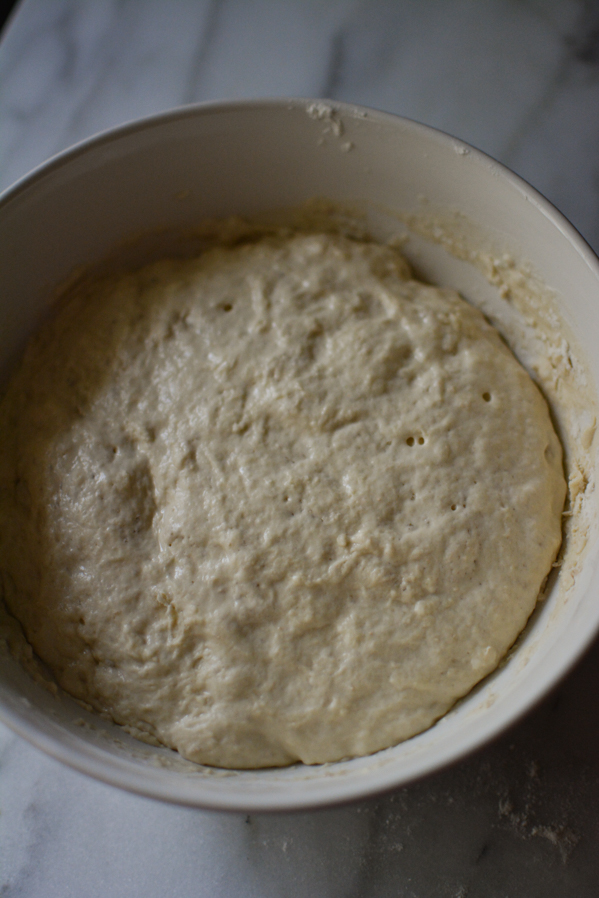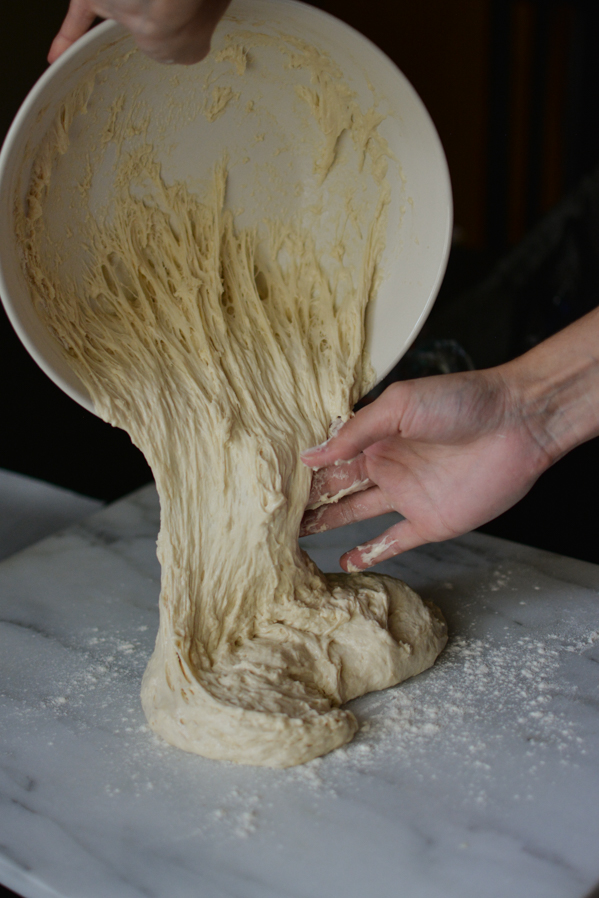2-Hour No-Knead Bread
This no-knead bread has become a staple in our house. Instead of taking all day to rise, I've adapted this recipe so you only need 2 hours rising time. This is perfect for when you're making dinner and realize that some rustic, crusty homemade bread would be the perfect addition to your meal, except you didn't have the foresight to make the dough early that morning (or the day before). This bread recipe has saved the day for us on many occasions! And it is so delicious and flavorful you'd never know it didn't take all day to make.
The no-knead aspect is great for those of you who are afraid of making bread. Have no fear! This is probably the easiest bread recipe you'll ever make. You just stir together the four simple ingredients, cover and let rise in a slightly warm space. Two hours later, you dump the dough out and with floured hands you just form it into a round. No kneading required! After forming a round you put it into a preheated dutch oven inside your preheated oven (dutch oven inside your oven, yes), and bake for about 30 mintues! Viola! Instant rustic, thick crust-ed, homemade bread. You're going to want to save this recipe.
So, similar to my 1-Hour Vegan Cinnamon Rolls, I use more yeast in the recipe than usual to speed up the rising process. This helps get more bubbles in your dough and aids in giving it that developed yeasty flavor in less the time.
When I leave the dough to rise for two hours, this is what I do. I pre-heat my oven to 200 °F, and then turn it OFF. After about 10 minutes of it being off, I place my covered bowl of dough into the OFF oven with the door cracked. This creates a nice cozy environment that helps the yeast thrive and allows the dough to rise quickly. You just want to make sure the oven is OFF and just slightly warm, NOT hot. If it's too hot it will kill the yeast and ruin your dough. Optimum temperature for dough rising is 80-100 °F.
For anyone interested in the science of how this no-knead bread works, I found this article from Serious Eats very interesting! Typically you want to knead the dough to help create the glutens that make up the structure of bread. So without kneading, how is the dough structured? The yeast is doing all the work here. In the original recipe you allow the dough to rest for about 18 hours, and as the yeast is creating movement through the dough with the carbon dioxide bubbles it produces. So to avoid this long fermentation period, I added more yeast to allow for more rapid movement through the dough.
For this recipe, a dutch oven is necessary. The science for this is also explained in the Serious Eats article, but essentially it allows for the high heat to be more concentrated and helps the dough rise rapidly in the oven, and creates a good steam environment to help with the bubbly crackly crust of the bread. Here is a link (affiliate) for a dutch oven similar to mine. I've heard good things about this one!
I really hope you try this bread, it's something we make very often and we love it. Let me know if you do make it! Tag your photos on instagram with the hashtag #sprinkledwithjules
Recipe adapted from Mark Bittman
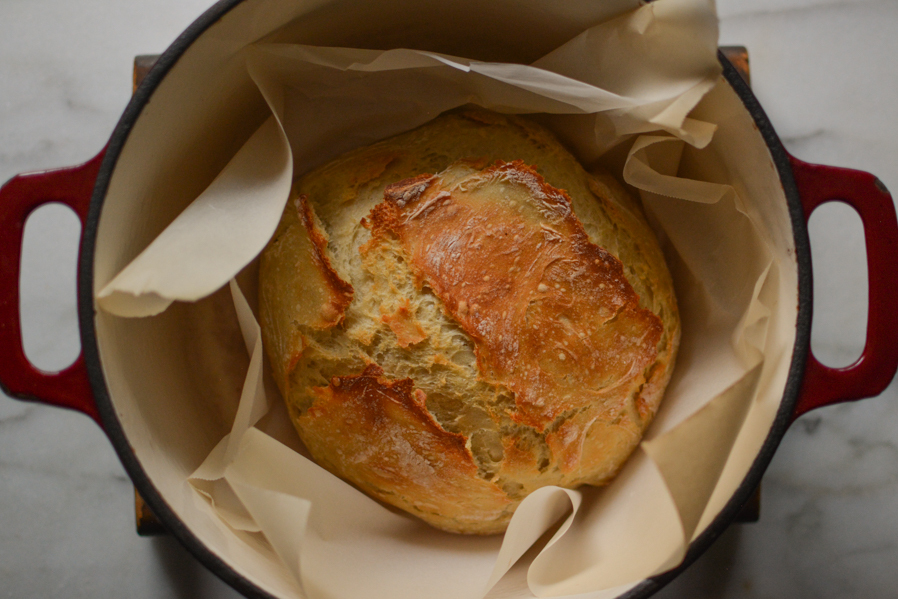
- 3 cups all-purpose flour
- 1 Tablespoon yeast
- 1 1/2 teaspoons salt
- 1 1/2 cups warm water (about 110°F)




